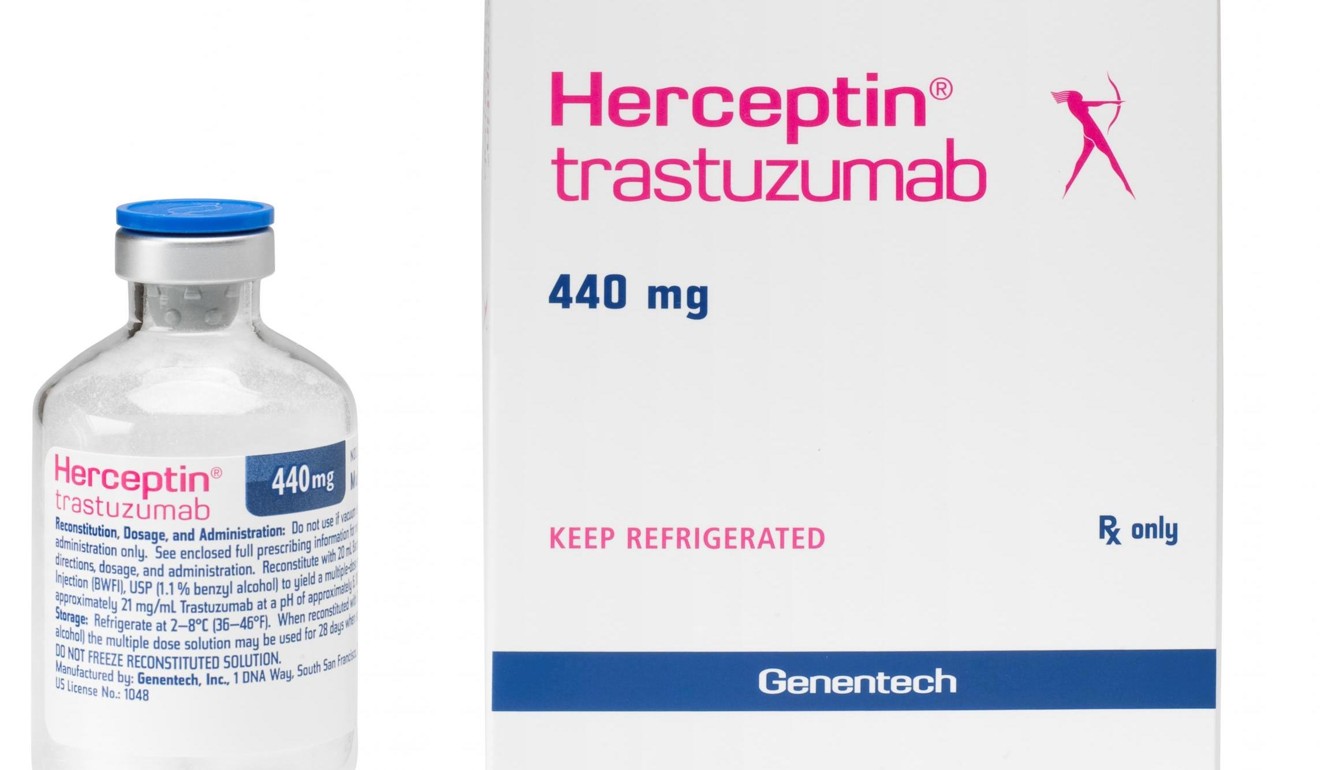
How regular exercise helps in the fight against cancer, both physically and emotionally
- Diagnosed with Stage 2 breast cancer, Fiona Tang was determined to continue her qigong practice
- Recent studies and some oncologists support her, saying that regular exercise has many benefits, as long as the calorie intake is kept up
In September 2017, Fiona Tang Yuk-kwan was diagnosed with Stage 2 breast cancer aged just 41. In October that year she began chemotherapy, later undergoing radiation therapy and Herceptin therapy, a medicine used to treat breast cancer.
In January 2018, she had surgery to remove a lump in her left breast and 25 lymph nodes in her armpit. Not surprisingly, both the chemotherapy and radiation therapy took a big toll. “The first stage of chemotherapy left me feeling terrible,” says the fine arts teacher, who lives in Kowloon.
“I vomited continuously and experienced numbness in my limbs. During the second stage I was lethargic, felt feverish all the time and seemed more prone to allergies. The radiation therapy was just as bad – it made me feel like I was burning on the inside.”
However, Tang believes she would have felt a lot worse were it not for her daily qigong practice. She says that it is thanks to qigong, specifically, bai yin qigong, that she was able to recover quickly from the side effects of chemotherapy and radiation therapy.

“I had been practising qigong regularly since 2015,” she says, adding it is an ancient Chinese practice that aligns the breath with physical activity to help manage the body and mind.
“Fortunately, when I was diagnosed with breast cancer, my doctor told me that I didn’t have to stop doing qigong. A few days after I started chemotherapy, I practised the easiest style of qigong, ‘chan zhang gong’, which involved vibrating just my hands and arms while telling myself that I would feel better soon. As the weeks passed and I became stronger, I progressed to more advanced styles. The next time my doctor saw me, he was surprised at how fast I’d recovered from the chemotherapy and encouraged me to continue doing qigong. Now, besides practising qigong daily, I also ride my bicycle, lift weights, do yoga weekly and walk at least 10,000 steps every day.”
Crowdfunding for cancer treatment: family’s time vs money choice in Hong Kong health care system
Some oncologists are recommending exercise as a complement to traditional cancer treatments.
In 2018, the Clinical Oncology Society of Australia (Cosa) launched the “Exercise in Cancer Care” paper, which called for exercise to be incorporated alongside surgery, chemotherapy and radiotherapy, to help cancer patients counteract the negative effects of cancer and its treatment. The paper was published in the Medical Journal of Australia.
The Cosa paper advises that people with cancer should avoid inactivity and be as physically active as they can, with the goal of at least 150 minutes of moderate intensity or 75 minutes of vigorous aerobic exercise (for example, walking, jogging, cycling, swimming) each week; and two to three resistance exercise (such as lifting weights) sessions each week involving moderate to vigorous exercises targeting the major muscle groups.
Exercise has been shown to benefit cancer patients in a number of ways. One study, published in 2016 in Clinical Cancer Research, found that cancer patients who exercised regularly had a lower relative risk of cancer recurrence.

According to a study published in 2016 in the British Journal of Sports Medicine, cancer patients who exercised also had a lower relative risk of dying from their cancer.
Furthermore, according to a study by Northwestern University researchers in the US, exercise can help cancer survivors who are dealing with depression, a distressing side effect of the disease and its treatment.
This study was published in 2012 in the journal Cancer Epidemiology, Biomarkers & Prevention. Yet another study, published in 2012 in the Cochrane Database of Systematic Reviews, found that cancer patients who exercised experienced a better health-related quality of life, from reduced anxiety and sleep disturbances to improved emotional well-being.
Nur Faradyna Putri Kamarudin, a senior physiotherapist at Raffles Rehabilitation Centre in Singapore, adds that regular exercise can improve cancer patients’ fitness, muscle strength, joint flexibility and energy levels, which may have been affected by surgery or cancer-related therapies.

Exercise can also help patients cope with the common side effects of cancer and its treatment, such as fatigue, nausea, loss of appetite, anaemia, weight changes and the loss of muscle tone. Patients who suffer from other negative side effects, like shortness of breath, nerve damage, skin irritation or pain, might require a customised exercise programme, devised by a medical professional.
Kamarudin recommends that cancer patients do about 30 minutes of moderate intensity aerobic exercise daily. If the patient does not have the energy to complete the full half-hour in one session, Kamarudin suggests they break it up into sets of three 10-minute sessions. She also recommends moderate to vigorous intensity resistance exercises that involve working the shoulders, thighs and abdomen.
People with certain types of cancer or who are undergoing specific treatments should avoid some types of exercise, however.
I know of cancer patients who have trouble sleeping and eating, but I don’t have those issues. When I was undergoing chemotherapy, I also seemed to recover faster from the side effects of the treatment. Qigong has helped me emotionally, too.
“Best practice cancer care should include referral to a physiotherapist who has experience in cancer care,” says Kamarudin. “It is the physiotherapist’s job to help the patient follow the exercise guidelines and exercise safely. The exercises should be tailored to the individual’s abilities, prognosis or anticipated disease trajectory, and health status.”
If you are prescribed exercise as part of your cancer treatment, it is also important to make sure that your nutritional intake is sufficient.
While Hong Kong clinical oncologist Dr Victor Hsue Chan Chee acknowledges that exercise may reduce the chance of recurrence of some cancers, he warns that exercise requires a fair amount of energy in the form of calories, which cancer patients may not be consuming enough of to begin with. “When a cancer patient is undergoing treatment, exercise may not be useful, as it may make the patient’s already compromised protein and calorie intake even more difficult to maintain,” he points out.

Tang has completed all her chemotherapy, radiation therapy and Herceptin treatments. In 2018, she began a five-year course of Tamoxifen, a hormone therapy for breast cancer. She says that doing qigong has improved her quality of life and helped her come to terms with her diagnosis.
“I know of cancer patients who have trouble sleeping and eating, but I don’t have those issues,” she says. “When I was undergoing chemotherapy, I also seemed to recover faster from the side effects of the treatment. Qigong has helped me emotionally, too. When I was first diagnosed with breast cancer I was scared because I’d never been that sick before. I didn’t know what to expect, and as the days passed the fear and anxiety increased. But once I was well enough to start doing qigong again, I found that it had a calming effect on me. I practised a style of qigong called ‘lotus gong’ that requires you to perform different movements while maintaining a positive mindset. This really changed my feelings towards my diagnosis, and transformed those initial fears into an overwhelming sense of peace.”

